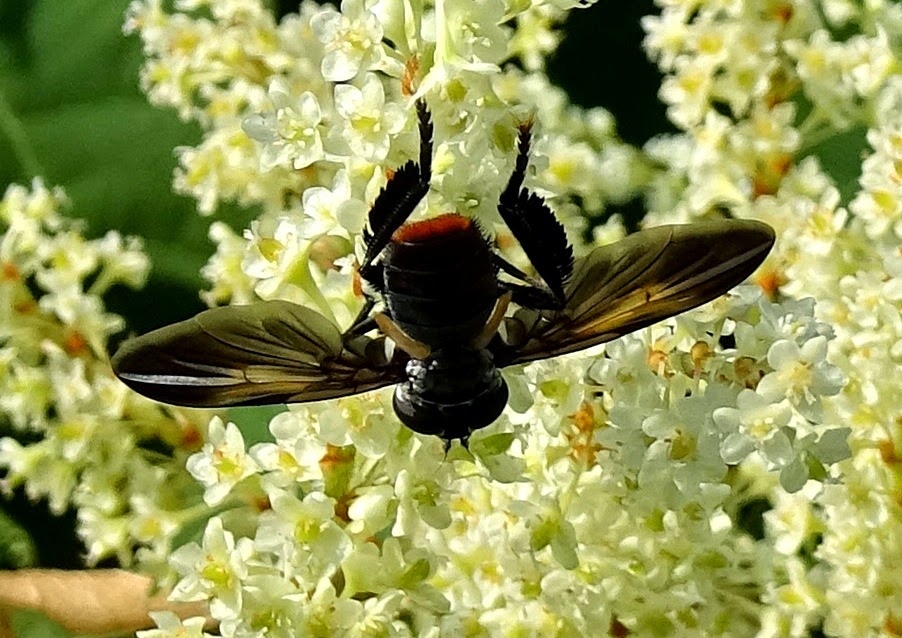In the final
mass banquet served to our local insects, goldenrods bloom through September.
The swaths and spots of gold that please our eyes provide essential energy to
the insects' preparations for winter, for continuation of the species if not
the individual.
The
goldenrods themselves are remarkable in reserving their vigor through months of
uncertain rain until this season when they have the attention of pollinators
mostly to themselves. Their green parts stay fit and succulent all summer to
achieve this.All sorts of intriguing creatures fly in for the sustenance. They may at other times be carnivores or herbivores. At the moment flowers fill the bill.
People stay on reasonably good terms with honeybees whose overwintering plan accumulates honey that we share-crop.
When it comes to flies the benefit to us is not so clear. Nevertheless goldenrods open their stamens to all comers who join in pollination. Perhaps you agree that the flies give spark to an innocent scene.
Other encounters are freighted with deeper wariness, whether inborn or acquired through a sting from an equally defensive wasp.
Certainly hornets are temperamentally and physically equipped to hold their ground with mere humans. They sport bold markings rather than camouflage as a warning of their potency.
The delicately limbed manage to find a place among the strong. The abundance of the offering keeps peace.
At rest the fast-flying denizens of Halibut Point are available to us for curiosity and wonder.
Their improbabilities variously stimulate love and loathing. Our best management plans aspire to allowances for all. That is our rational power.
For the bugs it's basic: keep it going.
Rationality summons the alignment of our impulses with wisdom. Our sense of beauty invites us to recognize that all is one.






































